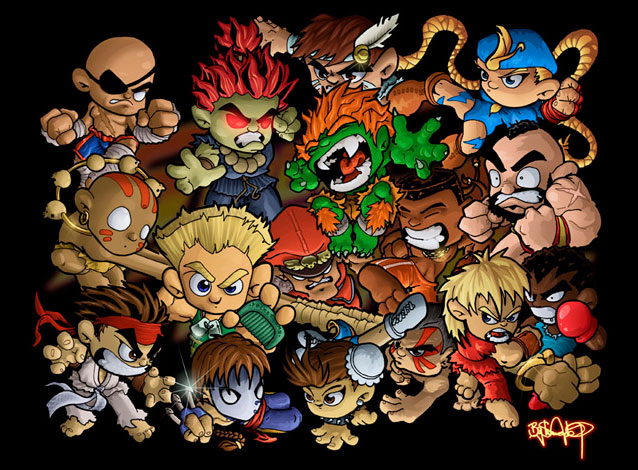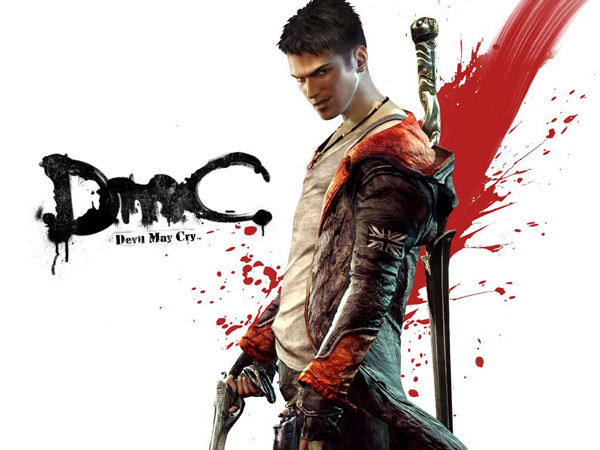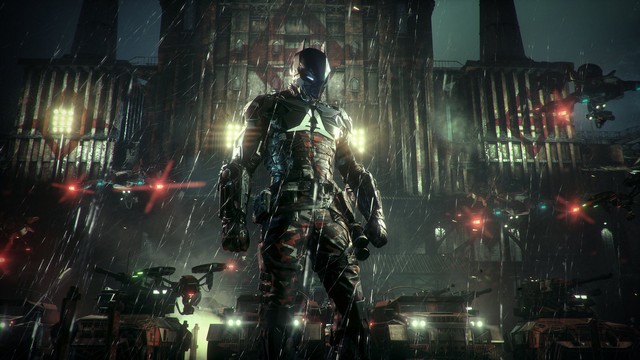

Game Rant’s Brian Sipple reviews Max Payne 3
Some people can’t catch a break; some can’t have one drift within the ballpark. Max Payne is the perfect embodiment of the latter. The kind of guy who would throw a whiskey glass against the wall after a hellish day at work, only to have the glass bounce off in defiance, as unbroken as the despair of the man who launched it.
Remedy Entertainment created this fascinatingly depressing character study of the now-former NYPD detective in the early 2000’s by battering him through the events of Max Payne and Max Payne 2. The challenge of a new chapter now lies with Rockstar — 9 years later in Max Payne 3. Fortunately, and unlike the life of its tortured hero, most of it is executed with perfection.
The 12-hour campaign fishes a noticeably older Max out of his desolate New York habitat, pitting him in Sao Paulo, Brazil to work private security for the wealthy Branco family. Though spearheaded by real estate mogul Rodrigo Branco, his brothers Victor (the middle-brother politician) and Marcelo (the younger-brother socialite), and wife Fabiana (the model-looks party animal), have all made names for themselves across town. Naturally, it’s not long before kidnapping, murder, and more heads their way, and in a city where government, criminal, and mercenary factions all have their hands in everyone else’s pockets, Max is powerless (and too delirious) to see the strings being pulled at his expense. Even though astute players will start to pick apart the web of intrigue halfway through, it’s thick and tangled enough to keep everyone guessing until the final thrilling twists.
Rockstar has also crafted a relentlessly dark, yet compelling tale of Max’s everlasting downward spiral. Our protagonist is new to Brazil — its culture, its people, its corroded system of justice — and where the tragedy and anguish that befell him in New York evolved him into the boozing, pill-popping degenerate of the first two games, the chaos, deception, and ruined shot at a fresh start in Sao Paulo devolve him to expose a raw, nothing-to-lose borderline psychopath. Actor James Mcaffery is back to provide more sterling acting as Max, and adds a superb narration full of brooding intellect and wit. Along with the rest of the cast’s top-notch voice work, it contributes to the series’ most fine-tuned story yet.
Max Payne 3’s design orchestration hits all the right notes. Just as one would hope when a developer of sprawling open-world sandboxes is forced to bottle everything up in condensed servings, environments are teeming with beautifully vibrant detail, rich lighting, and — save for a few that feel a bit strung out — function as grand set pieces gamers will long remember (even if Max doesn’t). The in-game verbal chatter between Max and his AI compatriots flows smoothly and realistically, along with the communication exchanged between enemies. Music showers players at every turn with galvanizing aural beats, be it from studio-made overtones or in-game radios and club speakers. Facial animations don’t seem to have the same verve as, say, L.A. Noire, but it’s hard to complain when the whizzing of bullets in Bullet Time, the visceral gore of pumping enemies with lead (captured in some instances by the enjoyable Bullet Cam), and the micro-destruction of the aforementioned environments has seldom looked better.
As Max’s journey unfolds, the story is told through an amalgamation of cinematic and graphic novel-inspired cutscenes. The latter is a vintage take on the stylings of previous Max Paynes, but with a sharp modern twist that juxtaposes important dialogue cues and occasional coloring effects to the underlying cinematics (which are superbly shot and smartly acted by McCaffery and the supporting cast). Cutscenes transition seamlessly into real-time gameplay, further conveying the sense of being locked inside Max’s consciousness — his thoughts, his fears, his blurred view of the world racing by.
The core gameplay experience of Max Payne 3 represents unfamiliar territory for Rockstar, an attempt to fashion a pure third-person shooter devoid of Red Dead Redemption or Grand Theft Auto’s open-world intricacies. Thankfully, despite an area-clearing mission structure that grows a little too familiar by the end of the game, a buffet of well-executed features only builds on Remedy’s framework, keeping the action and excitement in perpetual full-throttle.
Bullet Time makes its glorious return from Max Payne and Max Payne 2. Amid warping visual and audio effects, players can slow down time (with Max’s movements staying slightly ahead of the curve) and apply a flurry of shots to a wide range of foes. The meter-based system rewards players for smart allocation and also serves as the basis for revamped slow-motion shoot-dodges. Now, dive Max into any surface — a wall, a platform, a Xerox machine — and more often than not he’ll adjust to brace for a bone-preserving landing. It’s a product of the Euphoria physics engine that permeates every aspect of Max’s animation — including dual wielding, turning to shoot on the run, and maintaining 360-degree mobility while prone — and makes almost all movement appear neatly organic to the environment. Only once or twice will an enemy AI be subjected to a horror movie-like contortion.
Even with a fair and balanced economy of difficulty modes, targeting is the make-or-break setting of the game. Max Payne 3 lets players toggle the reticle setting between free aim, soft lock and hard lock. The latter two are varying degrees to which players can lock on to an opponent, and each blends well with Max’s run-and-gun-and-dive fighting style. Free aim, the default setting, shows off the fluidity and precision built into each weapon, but it’s hampered a bit by the incessant need for fast target acquisition and enemies who can be deadly accurate themselves. (A new cover system helps to counter this at first, but even exposing a hand for blindfiring can subject Max to an inordinate amount of damage.) That said, where the reticle lands, the bullet goes; there’s never a doubt with any shot — an ultimately satisfying complement to the game’s torrid pace and fearsome weaponry.
Just as admirable as the campaign’s gameplay, however, is the audacious way in which Rockstar weaves the same fixtures into multiplayer. The star of the show: none other than Bullet Time. To account for the conundrum of slowing down time with multiple players on multiple locations of the map at the same moment, the game devises a system where only those caught in sight of the Bullet Time user will be ensnared by its effect. Since the meter, along with any other acquired bonus, resets upon death (and since the average lifespan in many modes is about that of a television commercial) it’s used a lot less liberally than in single player and serves to enhance, not deter the flow of the game.
The standard deathmatch modes don’t feel conducive to the game’s style of play — kills are often predicated on a literal luck of the draw, with someone always ready to have the drop on a player — but they do make for a quick thrill. Max Payne 3 multiplayer truly thrives in Gang Wars. It’s here where two teams compete in five rounds designed around story elements from the campaign, complete with the heavier feel of the motion-blur effects and Max’s voiceover. Objective types changes dynamically off the last round’s result, as if reading from Max’s history of job’s that didn’t go as planned.
While a copious amount of custom loadouts and skins are unlockable through an XP and ranking system, the real long-term perks of multiplayer attributable to the maiden voyage of Rockstar’s “crews”. On the surface, they’re clans with custom insignias and apparel; however, the ability to issue vendettas, generate in-match feuds, and achieve special gameplay tasks — all of which are noted and tracked over the larger experience of Max Payne 3 and future Rockstar titles — adds an extra layer for those who appreciate a strong communal structure.
Dark and unnervingly melancholy as its story may be, Rockstar has tapped into Max Payne’s roots and created a world gamers will long to return to — and not just for its frenetic action and cinematic brilliance.
A lot has been made of developer’s strides to incorporate the fluidity, control, and weight of an FPS into Max Payne 3’s third-person formula; with Bullet Time at its best, a rock-solid targeting system, and gorgeous physics, it possesses a killer finesse that any top-tier shooter can aspire to. It’s a well-oiled, hardboiled shooter that gamers of all interests (though certainly not all ages) should enjoy.
Max Payne 3 is now available for the PlayStation 3, Xbox 360, and PC. Game Rant played the PS3 version for the review.
–
Follow Brian on Twitter @Brian_Sipple




 One of the Best Street Fighter fan-art youll ever see
One of the Best Street Fighter fan-art youll ever see Transistor Review: Awesome()
Transistor Review: Awesome() How to get DmC: Devil May Cry Achievements, Complete List
How to get DmC: Devil May Cry Achievements, Complete List Fallout 4: Show No Mercy walkthrough
Fallout 4: Show No Mercy walkthrough Batman: Arkham Knight PC Guide On How To Unlock All The Playable Characters Including Joker In Free Roaming
Batman: Arkham Knight PC Guide On How To Unlock All The Playable Characters Including Joker In Free Roaming